Text
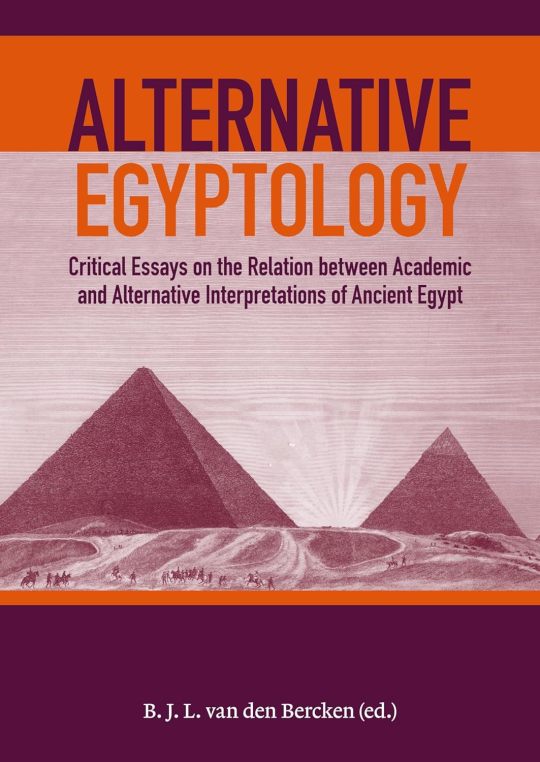
"From a mummy on board the Titanic to the pyramids’ alignment with the stars, from psychoactive mushrooms to the lost realm of Atlantis: alternative interpretations of ancient Egypt, often summarized as ‘alternative Egyptology’, have always focused on subjects that others shunned. Ever since the birth of scholarly Egyptology with the decipherment of the hieroglyphic script two hundred years ago, alternative interpretations and imaginative theories have flourished alongside it. They intertwined with egalitarian and spiritual tendencies in society during the nineteenth and early twentieth centuries, when ancient Egypt inspired countless mediums, artists, and movements from freemasonry to the Hermetic Order of the Golden Dawn. More recently alternative interpretations have inspired comic-book authors and nationalist Chinese bloggers.
It would be a mistake, however, for academics to simply view these alternative theories as fantasies that are best ignored. Their lasting popular impact needs to be assessed and (publicly) addressed by Egyptology, but they may in fact also open up fresh perspectives for research. The contributors to this volume critically explore various aspects of ‘alternative Egyptology’, assessing its impact on society and scholarship, and finding ways for Egyptology to relate to it."
— Alternative Egyptology: Critical essays on the relation between academic and alternative interpretations of ancient Egypt, by Ben van den Bercken
56 notes
·
View notes
Text

Mummy of King Tutankhamun in his Tomb (KV62), Valley of the Kings, Thebes.
Tutankhamun's face, when finally revealed, had a "serene and placid countenance", recognisable from his monuments.
New Kingdom, late 18th Dynasty, ca. 1332-1323 BC.
Photo: Kenneth Garrett
Read more
49 notes
·
View notes
Text

Amulet of a Papyrus Column, Wadj
Third Intermediate Period, ca. 1070-656 BC.
Height: 6 cm; diameter: 1.9 cm.
Now in the Art Institute of Chicago. 1892.209
Read more
17 notes
·
View notes
Text

A detail of painting of one of three musicians from tomb of Nakht (TT52).
New Kingdom, 18th dynasty ca. 1421-1372 BC.
Sheikh Abd el-Qurna. Thebes.
261 notes
·
View notes
Text

Seated Couple: Mentuemhat's Ancestors
Late Period, 26th Dynasty, ca. 664-525 BC.
Tomb of Mentuemhat (TT34), El-Assasif, Thebes.
Now in the Cleveland Museum of Art. 1949.493
A deceased vizier, whose name ended in Nufer, and his wife seated before a table of offerings. Presumably they were relatives of Mentuemhat. The work is in the style of early 18th Dynasty.
Mentuemhet is one of the most recognizable nonroyal names from ancient Egypt. He was a rich and powerful mayor and priest of Thebes and Governor of Upper Egypt who rebuilt the city after the Assyrians destroyed it.
Read more
30 notes
·
View notes
Text
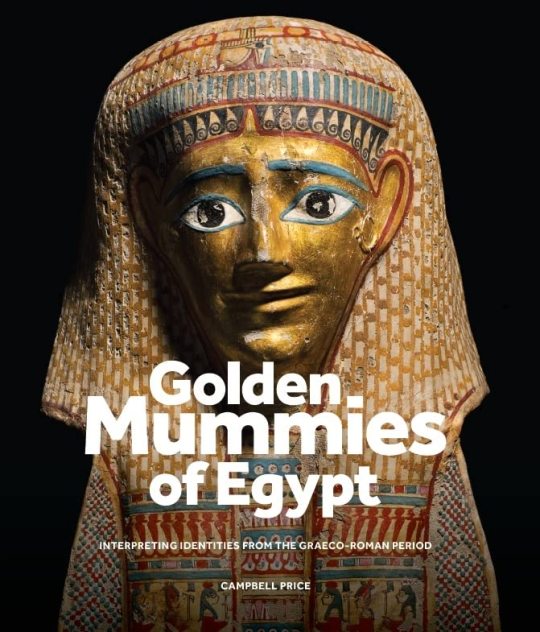
"Golden Mummies of Egypt presents new insights and a rich perspective on beliefs about the afterlife during an era when Egypt was part of the Greek and Roman worlds (c. 300 BCE–200 CE). This beautifully illustrated book, featuring photography by Julia Thorne, accompanies Manchester Museum’s first-ever international touring exhibition. Golden Mummies of Egypt is a visually spectacular exhibition that offers visitors unparalleled access to the museum’s outstanding collection of Egyptian and Sudanese objects – one of the largest in the UK.
This book is the first major publication based entirely on Manchester Museum’s Egyptology collections. It explores the Graeco-Roman Period of Egyptian history, asking to what extent our modern image of Egypt as a land of gold, sex, art and death is representative of ancient concerns and realities."
— Golden Mummies of Egypt: Interpreting identities from the Graeco-Roman period by Campbell Price, Julia Thorne
13 notes
·
View notes
Text

Portrait of Queen Tiye
New Kingdom, 18th Dynasty, c. 1391-1353 B.C.
From Medinet el-Gurob.
Now in the Neues Museum, Berlin. ÄM 21834, ÄM 17852
Read more
41 notes
·
View notes
Text
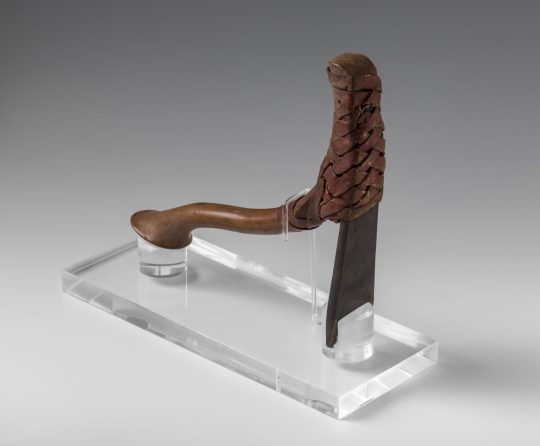
Axe with Kha monogram
New Kingdom, 18th Dynasty, ca. 1425-1353 BC.
From the Tomb of Kha (TT8), Deir el-Medina, Thebes.
Now in the Egyptian Museum of Turin. S. 8386
Read more
15 notes
·
View notes
Text

Léon Belly (French, 1827-1877)
Femmes fellahs au bord du Nil
284 notes
·
View notes
Text
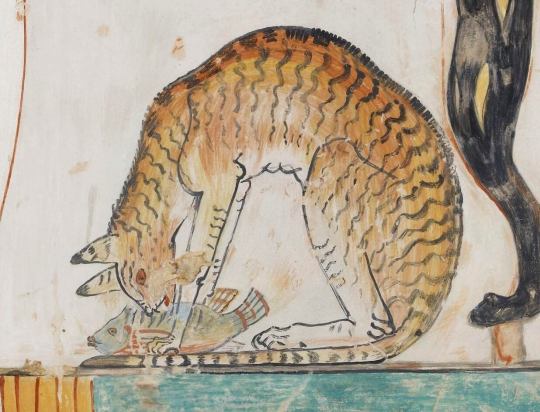
Cat feasting on a fish under the seat of Tawy, wife of Nakht
New Kingdom, 18th dynasty, c. 1401-1391 B.C.
Tomb of Nakht (TT52). Sheikh Abd el-Qurna, West Thebes.
Now in the Ashmolean Museum.
Read more
53 notes
·
View notes
Text
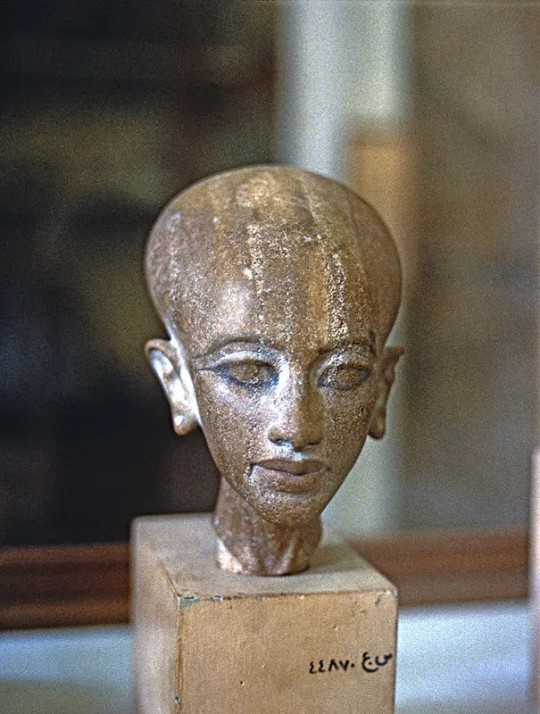
Head of Amarna Princess, probably Meritaten
New Kingdom, 18th Dynasty, ca. 1353-1336 BC.
From studio of sculptor Thutmose at Tell el-Amarna.
Now in the Egyptian Museum, Cairo. JE 44870
Read more
85 notes
·
View notes
Text

Darius dressed as Pharaoh of Egypt
Beneath a winged sun-disc, Darius I (521-486 BC) is depicted as pharaoh, offering to the jackal-headed god Anubis. The goddess Isis stands behind, shown wearing cow-horns.
The hieroglyphic labels identify the three figures, with Darius written out in phonetic hieroglyphs within the oval cartouche - a motif traditionally reserved for Egyptian kings and Queens.
Late Period, 27th Dynasty, ca. 522-486 BC.
Now in the British Museum. EA37496
127 notes
·
View notes
Photo
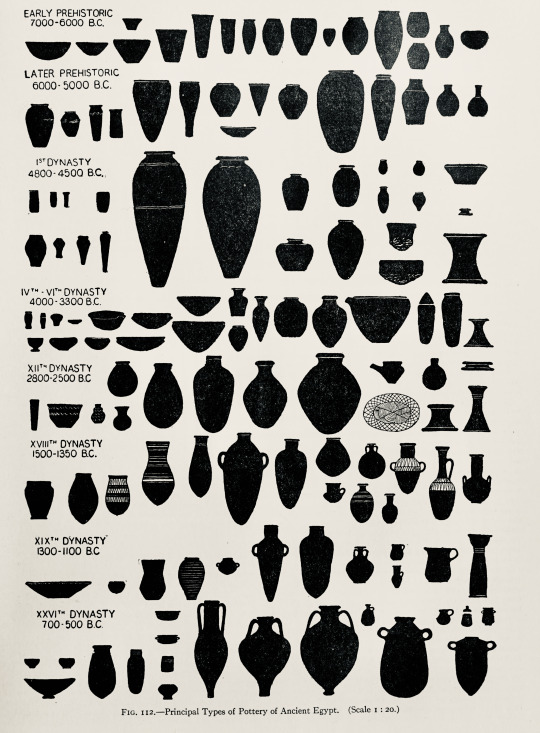
Fig. 112. “Principal types of pottery in Ancient Egypt.” The Encyclopaedia Britannica. v.9. 1922.
Internet Archive
4K notes
·
View notes
Text
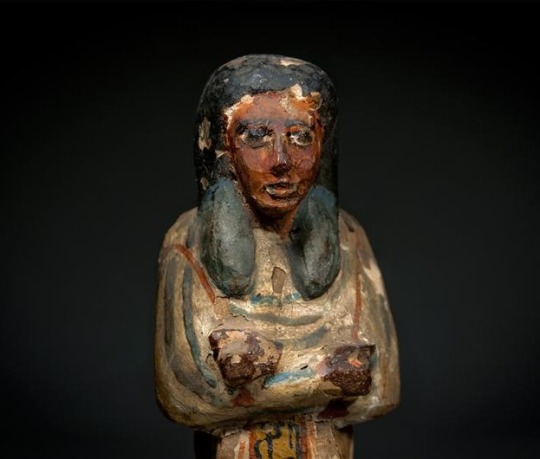
Ushabti for Lady Anhai, Chantress of Amun
The image is striking because it shows the young Anhai as she is being led to the afterworld even though she retains her youthful vigor and beauty. The powerful story of the beautiful Anhai on her journey to the afterlife was well known to ancient Egyptians, which is why this funerary figurine was made in her image.
Figurines such as this one were known as ushabti, which were placed in tombs and were intended to act as protectors of the recently deceased. This wooden ushabti was meant to represent Anhai herself, both in tribute as well as to appeal to the young priestess for a safe journey to the afterlife.
New Kingdom, Ramesside Period, 20th Dynasty, ca. 1100 BC.
Ex collection A.E. Davis. Now in the Private Collection.
Read more
34 notes
·
View notes
Text
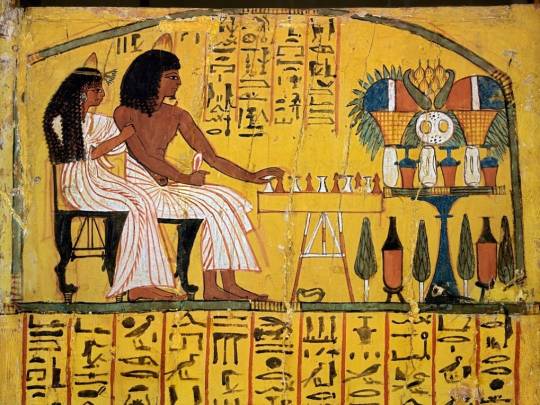
Door from the Tomb of Sennedjem
Sennedjem, followed by his wife Iyneferti, is playing the Senet game. They sit on chairs with lion paws, in front of a big offering.
New Kingdom, 19th Dynasty, ca. 1292-1189 BC. Painted wood lined with stucco. From the Tomb of Sennedjem (TT1), Deir el-Medina, West Thebes. Now in the Egyptian Museum, Cairo. JE 27303
38 notes
·
View notes
Text
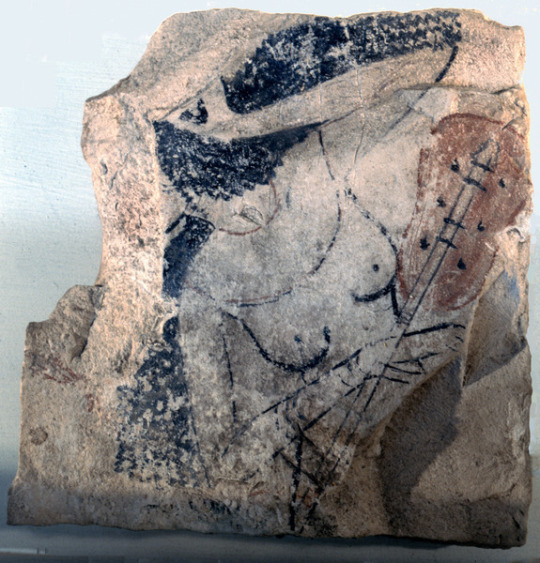
Ostracon of a Lute Player
New Kingdom, 19th Dynasty, ca. 1292-1189 BC.
From Deir el-Medina, Thebes.
Now in the Egyptian Museum, Cairo. JE 63805
Read more
15 notes
·
View notes
Text

Relief of Osiris, green-skinned
Tomb of Nefertari (QV66), Valley of the Queens, West Thebes.
368 notes
·
View notes